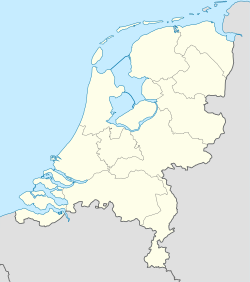Top Qs
Timeline
Chat
Perspective
Lutjegast
Village in Groningen, Netherlands From Wikipedia, the free encyclopedia
Remove ads
Lutjegast (Dutch pronunciation: [ˈlʏtɕəɣɑst]) is a village in the municipality of Westerkwartier in Groningen, Netherlands. It had a population of around 1,125 in January 2017.[3]
Remove ads
History
The name Lutjegast originates from Gronings in which lutje means small or little and a ga(a)st is a higher, sandy ridge in an otherwise swampy area. The village was first mentioned in 1459 as "op de Lutkegast".[4] Lutjegast is a road village which developed on a sandy ridge.[5]
The Dutch Reformed church was built in 1877 and was restored in 1922. The Reformed Church is a cruciform church built in 1922 without a tower in expressionist style.[5]
Lutjegast was the birthplace of the explorer Abel Tasman. He is memorialised in town by a monument, plaque and street name. In 2014, a museum dedicated to Abel Tasman opened in the village house.[6]
Until 1828, a manor house named "Rikkerdaborg" stood in Lutjegast. Its most famous occupant was Bernard Johan Prott who was the commander of Bourtange in 1672. Christoph Bernhard von Galen, the Prince-bishop of Münster had allegedly offered Prott ƒ200,000.- to take Bourtange, however Prott refused the offer and von Galen was unable to take the fortress by force.[7]
Lutjegast was home to 294 people in 1840.[6] The village used to be part of the municipality of Grootegast. In 2019, it was merged into Westerkwartier.[6]
Remove ads
Notable people
- Abel Tasman (ca.1603–1659), explorer, first European to discover Tasmania and New Zealand.[8]
- Arjen Lubach (born 1979), comedian, author, music producer and TV presenter.
- Klaasje Meijer (born 1995), singer, actress and flautist
Gallery
- Rikkerdaborg
- Former clergy house
- View on Lutjegast
- Reformed church in Lutjegast
References
External links
Wikiwand - on
Seamless Wikipedia browsing. On steroids.
Remove ads







